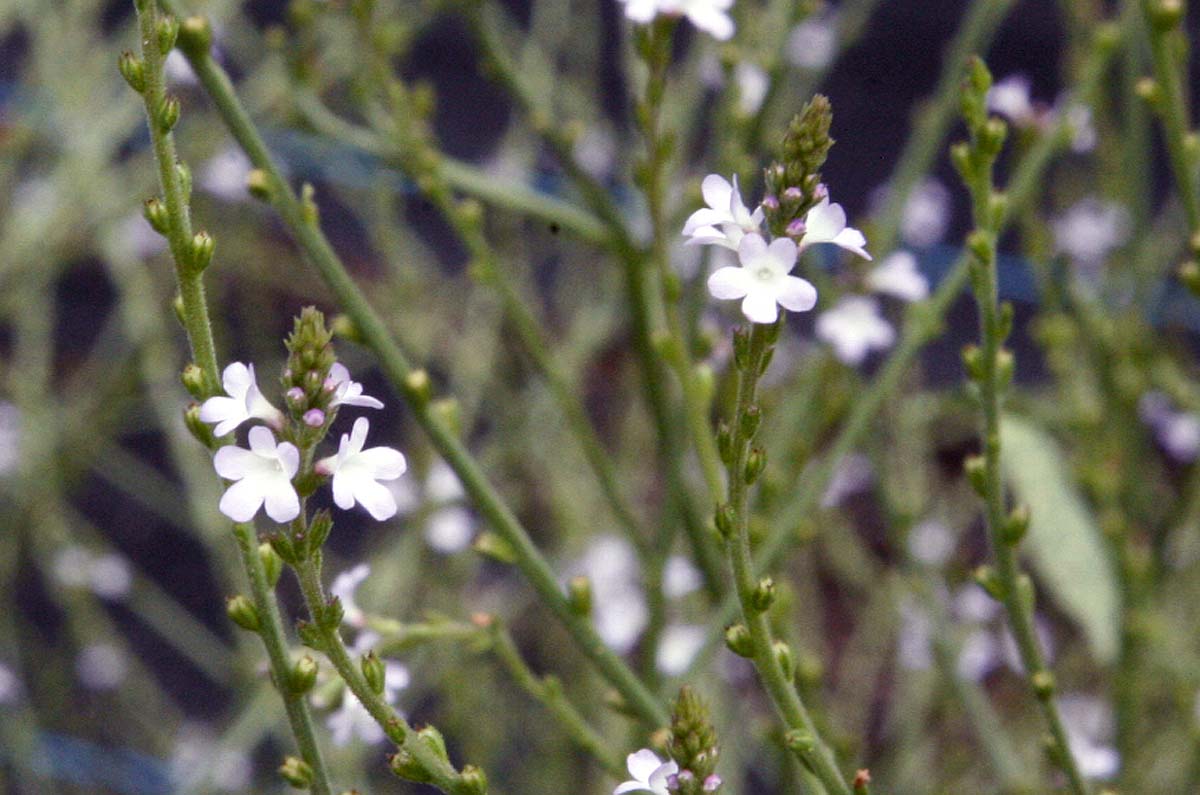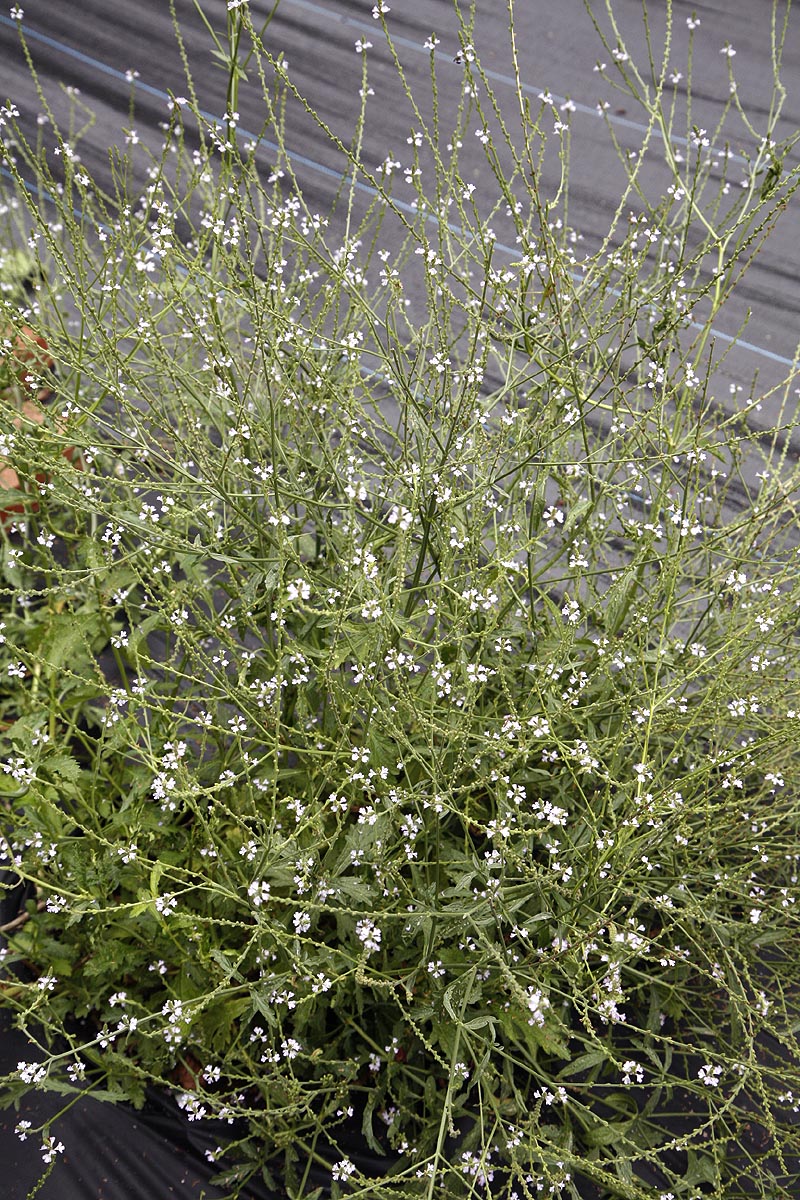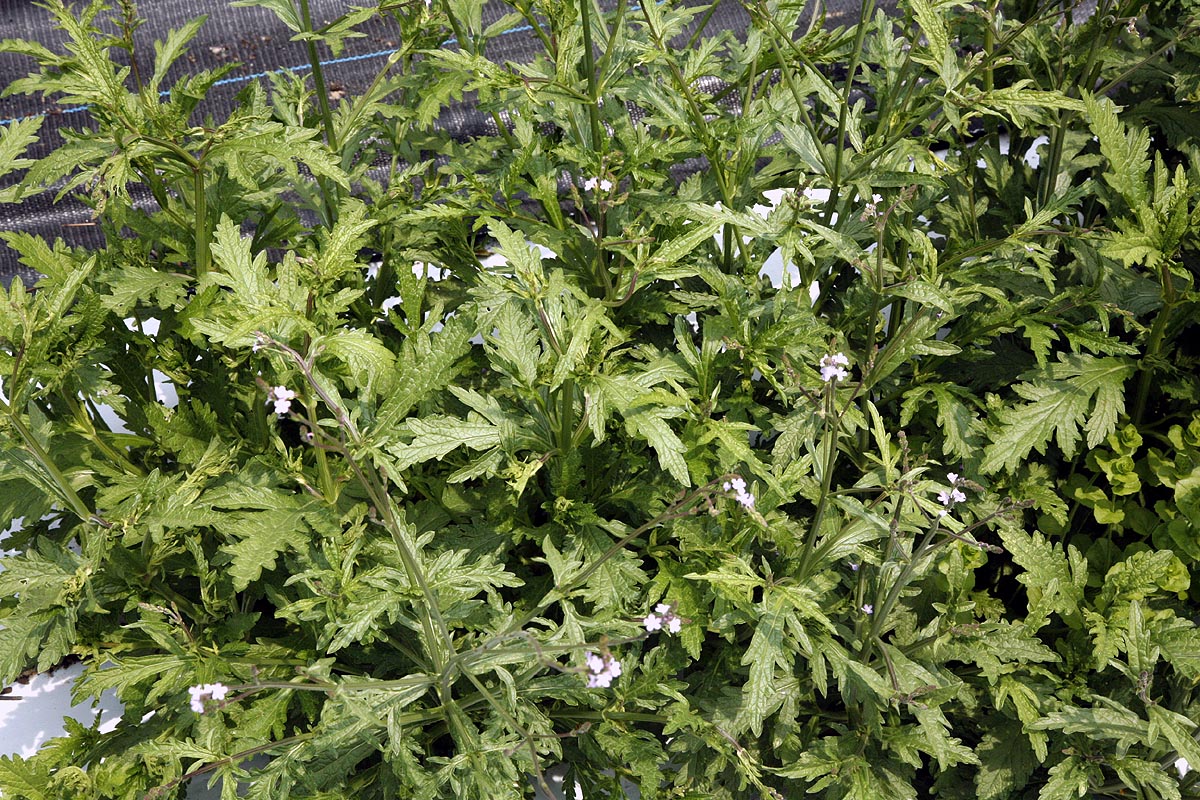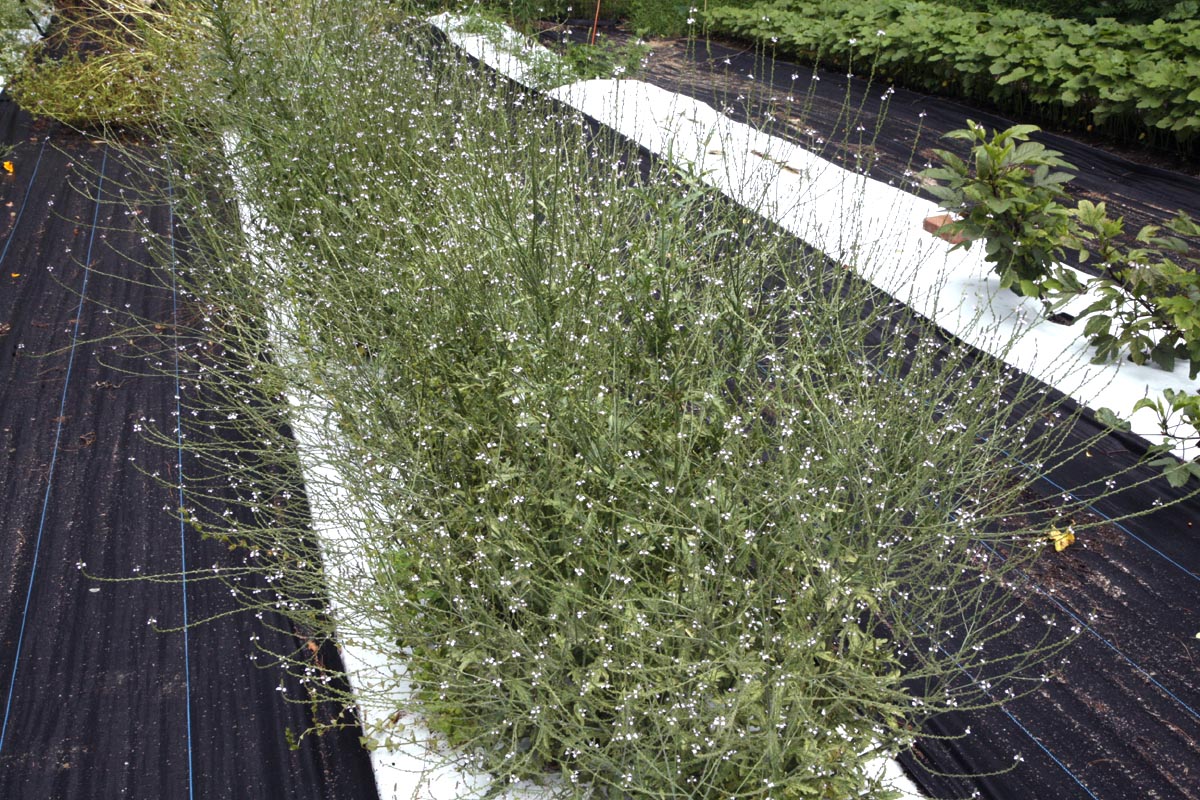If you look at one single plant Vervain does not seem to be the prettiest plant you can grow. It can look a little weedy. But put it in a cluster with other Vervain plants and it turns into a cloud of little blue flowers dancing in a mist of fine green stalks that is almost magical. Given the right conditions can grow to quite a size like its own little starry cosmos. It's a very delicate looking plant and given the right spot can enhance a flower bed with it's long flower wands and tiny lavender flowers that flower from the base of the wand to the top. It will grow on fairly poor soil and does not need much attention once it's established, it can easily thrive on neglect for many years. The butterflies and bees love it and birds will eat the seeds. It's a perennial hardy to zone 4 and deer don't eat it. Its a powerful nervine herb used for treating stress and tension but also has many other useful properties.
Description of Vervain (Verbena officinalis).
Vervain starts out as a small compact clump of fairly large leaves which are deeply divided almost forming leaflets. As the plant grows the leaves become smaller and more rounded and arranged oppositely on the stem. In late spring to early summer long thin stalks arise from the plant in a cloud up to about two feet. More like a ball of cotton candy. Each stem bears a series of tiny pale pink, lilac to light blue flowers starting at the base of the stem and working towards the top. The plant will flower for many months often until the fall frosts. It will easily flower in the first year from seed and grow to a fairly large size.
Growing Vervain (Verbena officinalis) from seed.
Seeds need light to germinate so do not cover. Best started indoors in trays or flats as seeds are small and can get overwhelmed by weeds if started outside. For details on growing seeds see Our
General Growing Instructions. Germination can take about three weeks but can be more depending on temperature. Prick seedlings out into individual pots when large enough to handle and plant out in early summer.
If sowing direct broadcast the seed on the ground and press down to ensure good soil contact. We do not recommend this method unless you have few weeds in the area because longer germination time makes it harder to keep the weed seedlings under control and allow the Vervain seeds to get established.
Large established plants can be divided in spring.
Location and Care of Vervain (Verbena officinalis).
Vervain likes a sunny position in reasonably well drained soil. It does not do well in very hot climates so zone 8 may have problems especially 8b. While its claimed to be hardy to zone 3 I doubt this. Some plants will overwinter fine others just die off, so having quite a few is worthwhile since its likely you will lose some. We lose a portion every year in zone 7a so I don't think they will live in zone 3 without serious winter mulching.
It can easily tolerate poor soil but does not like continual wetness. Once established it is fairly drought tolerant and can thrive on neglect beating out all but the most tenacious of weeds. It grows rapidly so ensure it has enough room, don't crowd it into a bed with other plants or it will out compete them. Works very well in a large flower bed where the long thin stalks make an excellent contrast to larger heavier leaves. For the best effect grow quite a few in a clump and enjoy the lovely floating flowers mixed with other plants it tends to lose is magical effect. It can also be placed in a semi wild habitat on a grassy bank or wildflower meadow. Bees and butterflies love this plant and birds eat the seeds. It will self seed to create larger patches but is not particularly invasive. Very easy to grow.
Edible uses of Vervain (Verbena officinalis).
The leaves are edible both raw and cooked. Young leaves can be used in salads or parboiled or added to soups and stews. Older leaves tend to be tough but are still excellent for making tea. It is reported that the flowers can be made into wine although picking them would be very time consuming. Flower heads can be used as a garnish, to flavor salt and the seeds can be roasted used on baked goods or ground and added to flour.
Medicinal uses of Vervain (Verbena officinalis).
It's most common uses are for insomnia, nervousness, anxiety, nervous exhaustion, depression and headaches as it is a powerful nervine. Infusions are used to enhance liver function and treat poor appetite and sluggish digestive performance. Tinctures are more commonly used for jaundice and liver function, gall bladder problems especially stones and reduce uric acid in gout treatment. It can also be used to encourage lactation in young mothers and to help with contractions during labor. However due to this property it should not be give while pregnant. Poultices and ointments are used for animal stings, eczema, weeping sores and to help with neuralgia or nerve pain. A mouth wash is used for ulcers in the mouth and soft, spongy gums.
These are just a few of the uses, it is also purported to be a sedative and diaphoretic, and used for treatment of coughs, colds, asthma and inflammatory conditions of the respiratory tract such as bronchitis. There are also report of it's use to treat ME. (Myalgic Encephalomyelitis) as well as some promising research in the treatment of certain tumors. In china it is being explored for use in treating malaria and blood flukes.
Leaves and stems are used both fresh and dry. The plant contains many volatile oils and has been used for centuries in Europe where it is native. It is used as infusions, tinctures, poultice and ointment depending on the malady.
It is also used as a flower remedy and is one of the original Bach remedies used for stress, tension, strain and 'Over-enthusiasm'.
Other uses of Vervain (Verbena officinalis).
In the middle ages this plant was considered associated with the moon, most likely from it's use with sleep disorders. It was therefore used in magic ceremonies and considered a most important herb. The long stalks with small seeds arranged in rows are very attractive to birds who love these seeds. It is often grown to encourage wild turkeys or to feed chickens or pigeons which is where it gets some of its other common names pigeon grass and turkey grass.
Vervain
(Verbena officinalis) is the most commonly used plant with this name. The other common names used are Herb of the cross or Prostrate verbena even though its not really prostrate. However in some places including some scientific papers it is referred to as Blue Vervain. This can be very confusing as there is another Vervain
(Verbena hastata) that is normally known by the name Blue Vervain and its a completely different plant which while bearing some resemblance to true Vervain is not easily mistaken for it. Its much taller and the flowers are far more prominent. While some internet sources claim that they plants are interchangeable most of the definitive herbal works do not state such. The plants appear to have different properties. If preparing herbal remedies care should be taken to ensure that the correct plant is used. Always check the latin name and ensure you have the right plant.
Verbena, Holy Herb, Herb of Grace, Herb-of-the-cross, Enchanter's Plant, Herb of the Cross, Juno's Tears, Van-Van, Fer Faen, Llysiaur Hudol, Enchanting Herb, Lustral Water, Holy Vervain, European Vervain, Simpler's Joy, Herbine, turkey grass, Pigeon Grass, Pigeon's Meat, Pigeonwood, Herb of Enchantment, Devil's Hate, Wizard's Plant, Ma Bian Cao









